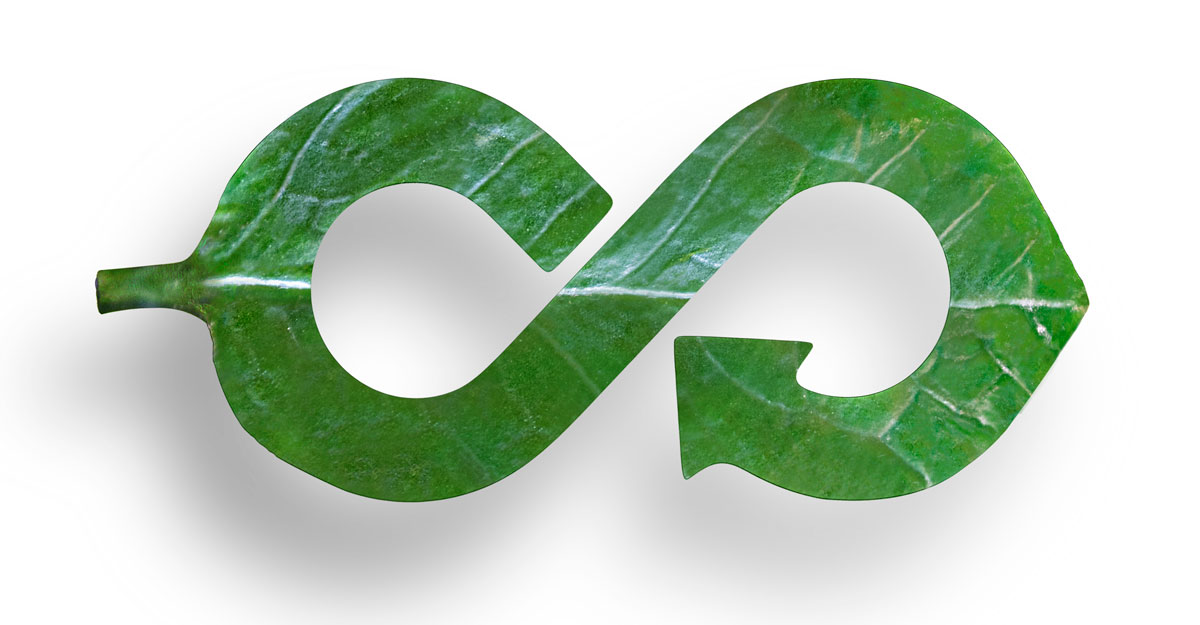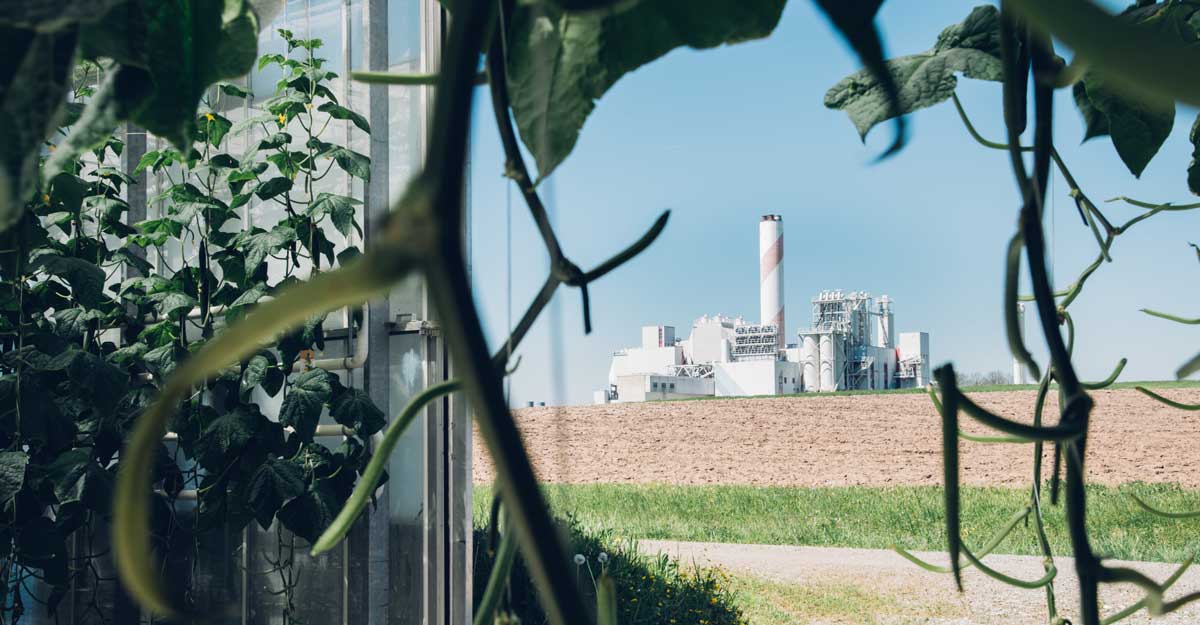By Amy Dietterich, Director, Global Challenges Division, WIPO
We all rely on a complex web of interwoven natural systems for our well-being. As such, we all experience the impacts of climate change, albeit to varying degrees, and we share a responsibility to encourage behaviors and solutions that will support the transition to a low-carbon future.
In our journey towards a green future, technological innovation is, without doubt, part of the solution. It is that part of the solution that the World Intellectual Property Organization (WIPO) is most actively and directly encouraging, in particular through its WIPO GREEN initiative.
A balanced intellectual property (IP) system that encourages and enables innovation is central to unleashing the creativity needed to develop cleaner, greener and more efficient technologies. These technological solutions will play a central role in allowing us to achieve sustainability targets in a world with finite natural resources and an expanding global population.
WIPO GREEN: catalyzing green tech transfer
WIPO GREEN was launched in 2013 in a bid to catalyze and accelerate green technology innovation and its transfer to expand the uptake and use of environmentally friendly technologies in support of the transition to a low-carbon future.
A public-private partnership, WIPO GREEN unites green tech innovators and those seeking green solutions, public and private entities supporting climate-friendly tech, as well as experts in green innovation and other relevant fields. Through WIPOGREEN, WIPO and its partners offer practical solutions that support the development, adoption and deployment of green technology solutions.
As an online marketplace for sustainable technology, WIPO GREEN helps to connect green technology providers (i.e. those responsible for developing such solutions) with technology seekers (i.e. those seeking a green solution to address a particular problem), such as sustainable access to water or climate-friendly sanitation management. It does this primarily through the WIPO GREEN database, which currently features more than 3,000 technologies and needs.
The WIPO GREEN Database
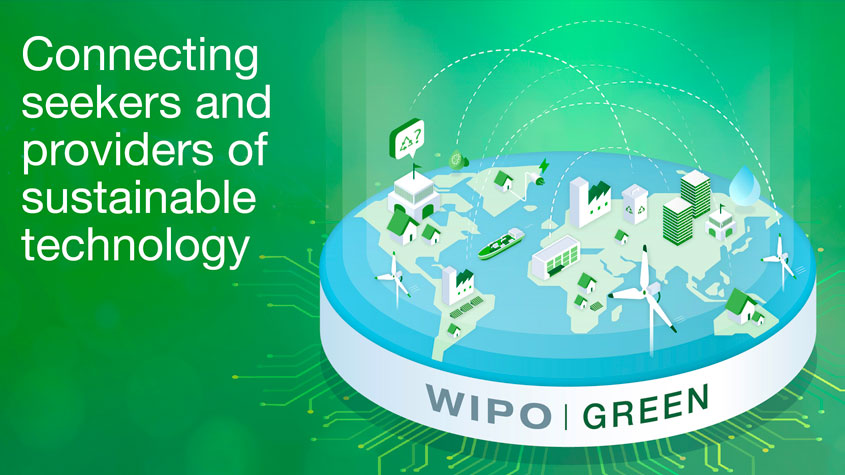
The WIPO GREEN database is the backbone of the WIPO GREEN platform. It covers technologies that help to both adapt to and mitigate the impacts of climate change and includes prototypes as well as marketable products. The database also includes the expressed needs of entities who are seeking technologies and solutions to help combat climate-related challenges. All featured technologies are available for license, collaboration, joint ventures and/or sale.
At present, the database includes seven technology categories:
- Building and Construction;
- Energy;
- Farming and Forestry;
- Pollution and Waste;
- Transportation;
- Water; and
- Products, Materials and Processes.
Each category includes a series of related subcategories. For example, subcategories for Pollution and Waste include recycling, waste management, air pollution, etc.

WIPO GREEN is accessible from anywhere in the world and at no charge. When registering, users are simply required to outline the environmental benefits of their technology. Today, the platform serves almost 1,500 international users from 63 countries, including small and medium enterprises, universities and research institutions, as well as multinational companies. By way of example, these include:
ANAGEA Consultores S.p.A. (Chile)
Dalian Institute of Chemical Physics, Chinese Academy of Sciences (China)
Fujitsu Limited (Japan)
Kenya Climate Innovation Center (Kenya)
Korea Institute of Energy Research (South Korea)
PROvendis GmbH (Germany)
University of Pennsylvania (United States of America)
Any company or entity with a technology that has the potential to support the transition to a low-carbon future, and anyone seeking a specific solution to a climate-related problem, can sign up to WIPO GREEN. In doing so, they join the expanding WIPO GREEN ecosystem and may even go on to become a WIPO GREEN partner.
Climate change and food security
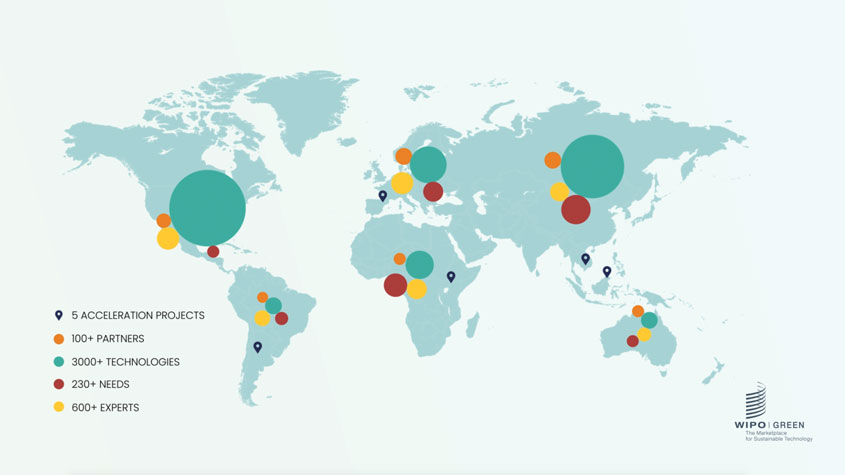
Last year, we unveiled the WIPO GREEN Strategic Plan for the period 2019 to 2023, which takes the program to a new level. It also identifies as one of its three strategic goals the need “to support member states to leverage IP and innovation in global efforts to address major policy issues related to climate change, food security and the environment.”
As climate change and its impact on agricultural production systems and food security are so deeply interwoven it seemed a natural next step to tie food security into the WIPO GREEN platform. For that reason, our Strategic Plan now includes an ambitious plan to enhance the WIPO GREEN database in the areas of sustainable food production technologies, including technologies to reduce food waste.
Issues of food security and climate change can be addressed in part through adaptation initiatives, such as climate-smart agriculture. This broad approach to agricultural development seeks to increase agricultural productivity, improve resilience and reduce vulnerability to climate change, and to reduce greenhouse gas emissions.
WIPO GREEN has a broad global network of supporters and a rich database of IP assets (inventions, technologies and know-how) containing innovative solutions, many of which are relevant to agricultural production and food security. Indeed, two of the last green technology “matchmaking” projects have sought to catalyze agriculture-related green technology innovation. Also known as “acceleration” projects, these initiatives enable green technology providers and seekers to connect, generate relevant knowledge about the green technology landscape, and act as a gateway to a range of key stakeholders.
In light of the significant potential of climate smart approaches to address environmental challenges, in 2019, together with its partners, WIPO GREEN began rolling out an acceleration project in Latin America to explore local challenges and identify potential opportunities to apply climate-smart solutions, for example to wine production in Chile and farming and land management practices in Argentina and Brazil.
Sustainable agriculture – Challenges of a winery in Chile
Video: María Luz Marin, Chilean wine producer and Acceleration Project 2019 participant, on sustainability and the green technology needs of her winery.
There is huge power and possibility in connecting climate change, food security and indeed, global health, from an innovation perspective and in terms of public awareness.
Climate change and intellectual property
Innovation has a central role to play in tackling climate change, as affirmed in the Paris Agreement on Climate Change (Article 10), which states, “[a]ccelerating, encouraging and enabling innovation is critical for an effective, long-term global response to climate change and promoting economic growth and sustainable development.”
The IP system fosters innovation, as well as the transfer and dissemination of technology – including climate-friendly technology. While IP rights provide economic incentives to develop new solutions, they can also help in diffusing innovation to the places of greatest need, through for example, licensing agreements, joint ventures and more.
If you look at the United Nations Sustainable Development Goals, more than half of them require green technology solutions if they are to be achieved. That’s exciting, but it also underlines the urgency of developing and using environmentally friendly solutions.
Global network for climate-friendly innovation
Since its launch in 2013, WIPO GREEN has established a broad network of international actors engaged in climate-change mitigation and adaptation. This cross-sectoral group of partners currently includes over 100 international organizations, IP offices, trade and business associations, multinational corporations, government and financing institutions, universities and research centers. Each partner plays a different role in line with its particular expertise. For example, “database partners” add technologies to the database. WIPO GREEN also has established partnerships around policy, research and communication, technical assistance and finance. Each type of partnership makes an important contribution to WIPO GREEN’s mission to accelerate the transition to a greener global economy.
Accelerating green innovation regionally
Since 2015, WIPO GREEN has organized various regional acceleration projects to catalyze innovation and technology diffusion on the ground within a particular sector. These include a wastewater treatment project in Indonesia, Philippines, and Viet Nam; an agriculture and water management project in Ethiopia, Kenya, and Tanzania; an international event on water management in Switzerland; and a project covering energy, clean air, water and agriculture in Cambodia, Indonesia and the Philippines.
The latest project, which launched in 2019, is exploring the challenges and opportunities for climate smart agriculture in Latin America referred to above. The project focuses on three sectors: wine production in Chile; zero-till or conservation agriculture in Brazil; and intensified crop rotation, soil re-carbonization and carbon sequestration, no-till and forest management in Argentina.
Research undertaken by multiple partners, including the national IP offices of Argentina, Brazil and Chile, has identified more than 40 green technologies and needs in the three countries. In the second phase of the project, WIPO GREEN is facilitating tangible links between the producers and the seekers of green technologies in the region.
Tangible impact
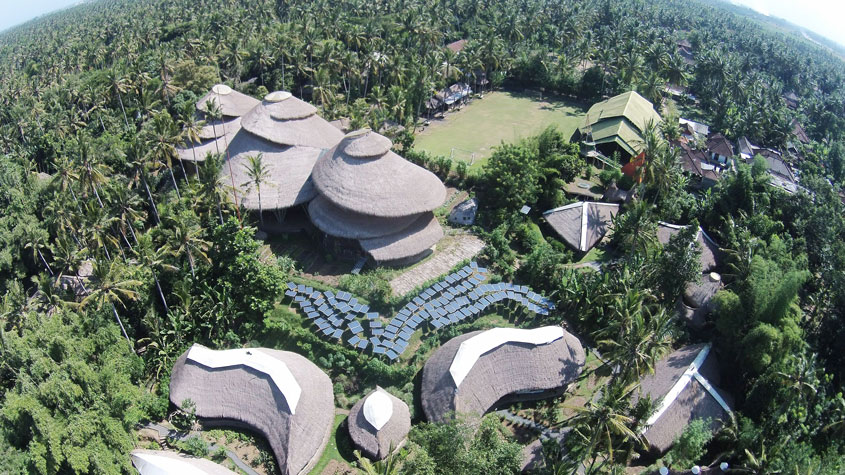
Various new collaborations between technology providers and seekers have taken place, which demonstrate the positive impact of WIPO GREEN’s acceleration projects. For example, in 2018, through Southeast Asian WIPO GREEN acceleration project, The Green School in Bali, Indonesia, connected with Zero Mass Water (USA). This resulted in a collaboration that allowed the school’s Bali campus to use Zero Mass Water’s SOURCE Hydropanel to provide its students with a regular supply of clean drinking water.
Green School’s goal is to create a sustainable educational environment. The school has incorporated various clean technologies into its daily operations, including renewable energy sources, which supplies 85 percent of the school’s power needs, a water filtration system, a waste management center, a composting station, aquaponics and biodiesel buses.
In 2018, Green School’s Innovation Hub was searching for an easy-to-maintain way to generate drinking water for the campus, especially in the dry season. In June of that year, staff from the school attended WIPO GREEN’s Green Technology Matchmaking Event – part of the Southeast Asian acceleration project – where they met Zero Mass Water whose SOURCE Hydropanel uses solar power to extract moisture from the air to produce drinking water.
As noted by Baxter Smith, Innovation Hub Project Manager at Green School, “finding the right company to collaborate with is not always easy; the area of our work, geographical and climate context of our location – all these features play a role when we take a decision on incorporating a new technology. That is why, when we learned about the WIPO GREEN matchmaking event in Manila, it seemed like a great opportunity to build some in-person connections with innovators working particularly in our region.”
Such collaborations are also possible beyond WIPO GREEN acceleration projects, through the WIPO GREEN database, where registered users from all corners of the globe can contact each other directly, and start building partnerships that will enable them to find solutions to the climate-related challenges they face.
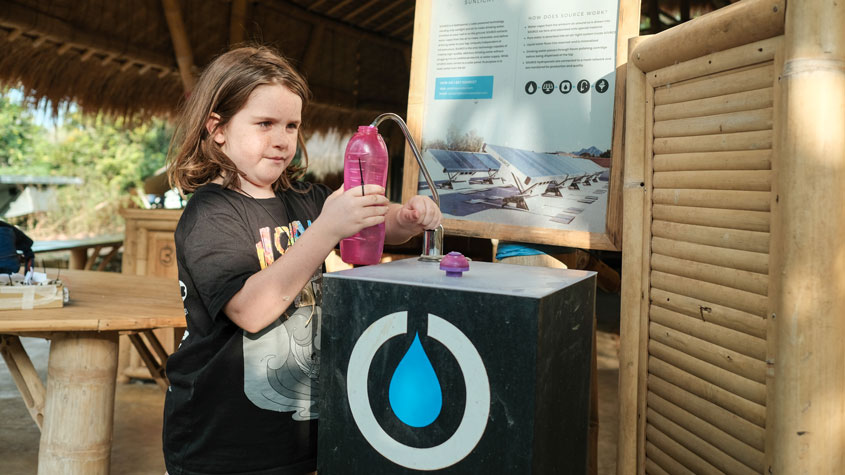
The road ahead
All WIPO GREEN assets – the database, network and acceleration projects – are practical tools that support our journey towards a greener future. In its first five years, WIPO GREEN has seen encouraging growth in the number of green technologies listed in its database. Moving forward, we aim to acquire a better understanding of how we can support the needs of those who seek green technologies. To this end, the WIPO GREEN team is working to expand the functionality of its database and to provide WIPO GREEN users with relevant and useful green business intelligence.
Every day, the world learns more about the urgent need to do things differently and move in the direction of a green future. Efforts are required on all levels: as individuals, as organizations and on a systemic level. For WIPO and the WIPO GREEN team, making a practical and actionable contribution to the myriad environmental challenges facing the world today is our goal and our duty. Let’s join together in celebrating this year’s World Intellectual Property Day – Innovate for a Green Future and support our collective journey to a low-carbon future.

